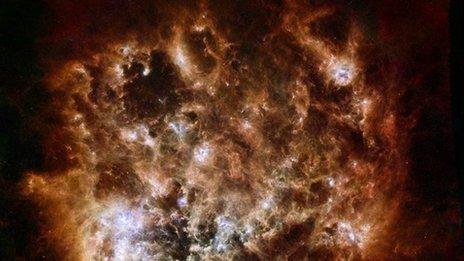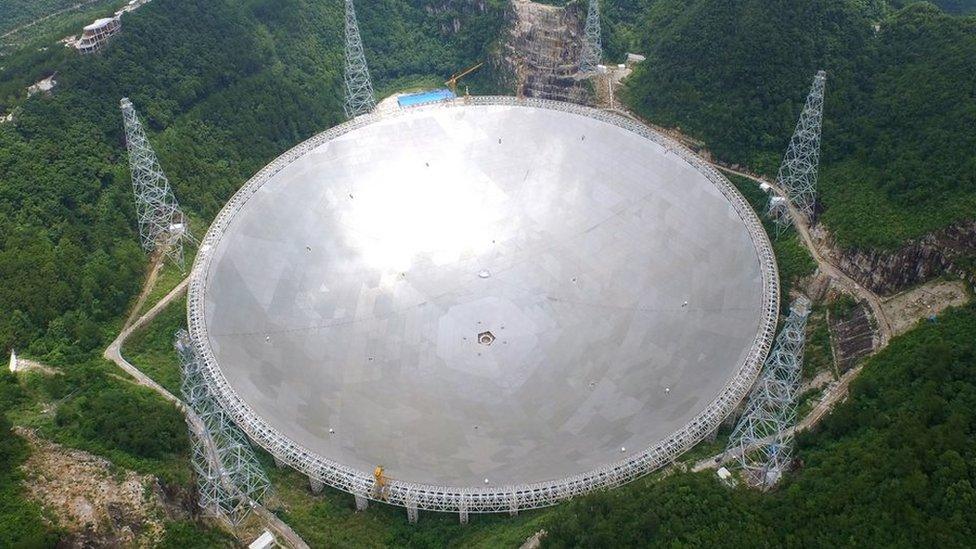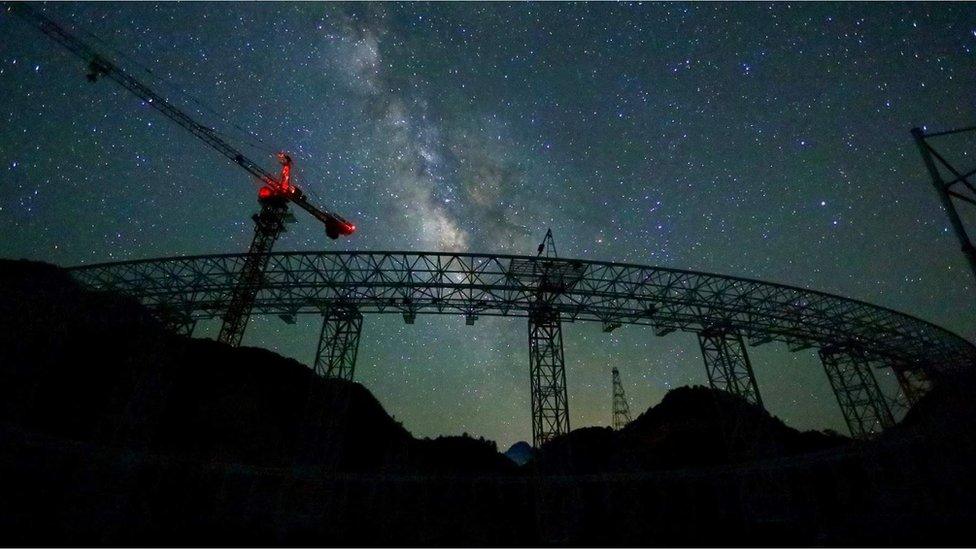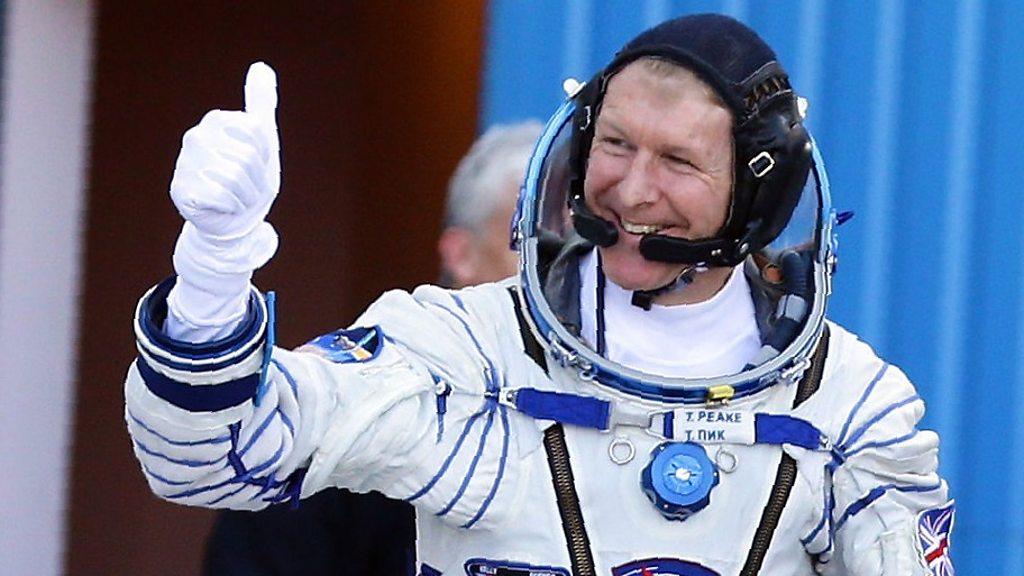Study finds stars are forming quicker than previously thought
- Published
- comments

This is what a new star looks like when it's starting to form
Chinese astronomers have discovered evidence that stars could form much more quickly than previously thought.
They used the world's largest radio-telescope, the Five-hundred-metre Aperture Spherical Telescope (FAST), to look at an area of space that's about to form a new star to find this out.
It is all to do with the strength of magnetic fields. Scientists say this could change our understanding of how stars form.
Read on to find out more.
What did the telescope find?

China's radio telescope measures 500m across
The FAST telescope looked into what's called a molecular cloud, which is basically a big gathering of space dust and other matter.
The one the Chinese astronomers looked at is called Lynds 1544. It's 450 million light years away from Earth, and it's an area where a new star is starting to take shape.
So how do stars get made in these clouds? Dr Gwen Williams, an astronomer at Leeds University, told Newsround: "Stars form in a molecular cloud by gathering enough space dust and gas into one place.
"Clouds though are falling in on themselves due to gravity, so scientists have thought over the years that the magnetic field they have helps prop them up and slows down that collapse, to give them enough time to gather the space dust they needs to make a star."
The telescope was built into a natural crater in Guizhou Province in southwest China
It took five years to build and cost $180m (comparable to £140m at the time)
It measures 500m across
It's the biggest in the world - the previous record-holder was the Arecibo Observatory in Puerto Rico which is 305m
By comparison the Lovell telescope at Jodrell Bank in the north of England measures 76m across
But the scientists at the FAST telescope discovered a change in the magnetic fields within Lynds 1544 - it was 13 times weaker than originally predicted.
"A weaker magnetic field means it can't have been holding the cloud up for as long as expected, meaning that the star might have formed faster than we once thought," Dr Williams explained.
What else has the telescope found?

This is what the telescope looked like when it was being constructed
It's not just stars that this radio-telescope has been studying. Since its construction in 2016, it has also picked up hundreds of unexplained radio signals.
The signals are loud but scientists still aren't quite sure what they could be.
Some theories include the sound of a star falling into a black hole, or potentially communications sent from aliens on another planet!
- Published16 February 2021

- Published10 January 2022
- Published4 October 2019

